LAWN AERATION SERVICE
Core Aeration for Colorado Lawns
Aeration is a Must-Do Service for Colorado’s Clay Soils
Lawn aeration service is a crucial practice for maintaining a healthy lawn in Colorado, particularly due to the region’s dense, compacted clay soils. Over time, factors like foot traffic, heavy snowfall, and irrigation cause the soil to become tightly packed, restricting the flow of air, water, and nutrients to the roots.
Core aeration effectively relieves soil compaction by removing small plugs of soil, creating pathways for oxygen, moisture, and nutrients to penetrate deeper into the root zone. This process promotes stronger root growth, improves drainage, and enhances soil structure, making it easier for your grass to flourish. Regular plug aeration results in a lusher, healthier lawn that can better withstand Colorado’s unique climate conditions.
Combine Lawn Aeration with Seeding, Humate, or Compost
Aeration is particularly beneficial when combined with overseeding and soil amendments like compost or humate, as the newly created holes provide an ideal environment for seeds to establish and for organic matter to integrate into the soil. For Colorado lawns, a regular lawn aeration service—typically in spring and fall—can significantly improve turf resilience, drought tolerance, and overall lawn health.
Core Aeration Service
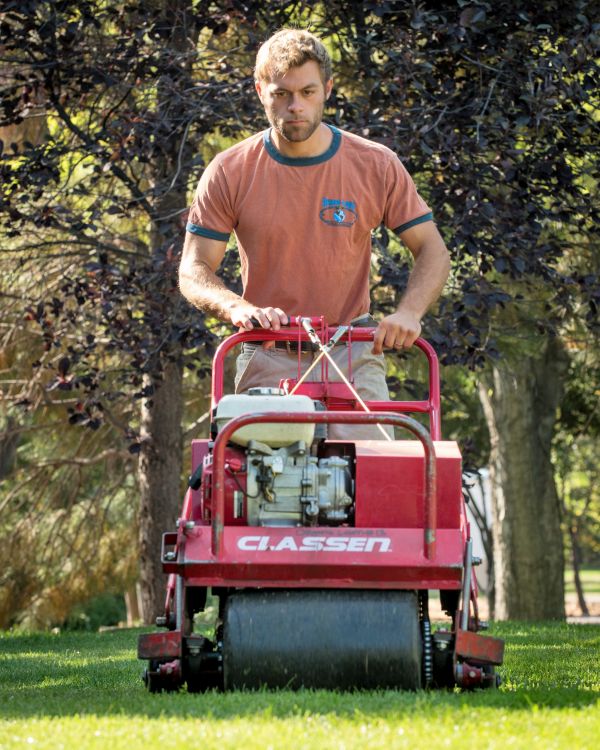
Supports Beneficial Soil Microbes and Enhances Soil Health
Oxygen in the soil is essential for fostering a living soil. By creating air channels, a lawn aeration service helps sustain the microbial populations that contribute to soil fertility and plant health. These beneficial microbes rely on oxygen to break down organic matter, cycle nutrients, and improve soil structure. Without adequate aeration, compacted soils—especially those with high clay content, like those found in Front Range Colorado—can suffocate microbial life, reducing soil vitality.
How Often Should You Aerate a Lawn?
For optimal results, core aeration should be performed at least once a year in the spring, with an additional fall aeration recommended for densely compacted soils. This practice is particularly beneficial in Boulder, Fort Collins, and Arvada, where heavy clay soils demand extra attention. Prioritizing lawn aeration not only strengthens microbial life but also enhances root growth and improves overall lawn resilience. Invest in your lawn’s long-term health today!
Air for the Microbes to Breathe!
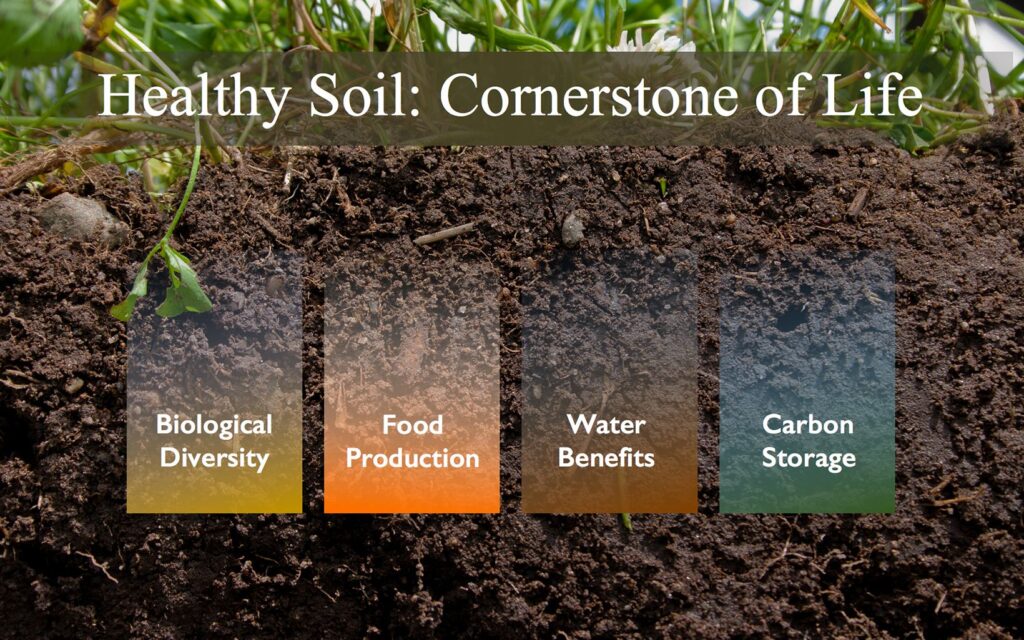
Double Lawn Aeration Service
For Severely Compacted Lawns
Experience the powerful benefits of double core aeration, a technique designed to significantly enhance soil aeration and root development. Unlike standard aeration, double core aeration involves our technician making two passes over your lawn, ensuring deeper soil penetration and greater coverage.
Double Aeration Benefits
✔ Heavily Compacted Lawns – Ideal for properties with high foot traffic, clay-heavy soils, or areas affected by construction and equipment use.
✔ Overseeding Success – If you’re planning to seed your lawn after aeration, double aeration maximizes seed-to-soil contact, improving germination rates and ensuring thicker, healthier grass growth.
✔ Improved Water & Nutrient Absorption – More aeration holes mean better airflow, water infiltration, and nutrient absorption, allowing your lawn to thrive even in dry or challenging soil conditions.
✔ Stronger, Deeper Roots – With enhanced oxygenation and reduced compaction, grass roots can grow deeper and more resilient, leading to a lush, greener lawn that withstands stress from weather and foot traffic.
Double Aeration
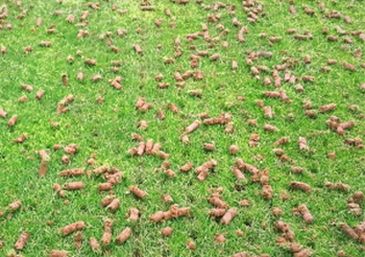
When Is Double Aeration Necessary?
Heavy Foot Traffic
If you have dogs in a small yard, their constant foot traffic can lead to significant soil compaction.
Compacted Soils from Overwatering
Lawns that have been over watered for prolonged periods often suffer from hardpan, making double aeration an effective solution.
Necrotic Ring Spot Lawns
We also strongly recommend double aeration for lawns affected by Necrotic Ring Spot. This lawn disease can be challenging to overcome, but double aeration significantly enhances the recovery process, proving to be far more beneficial than a single session.
Aeration Helps Improve Necrotic Ring Spot Lawns
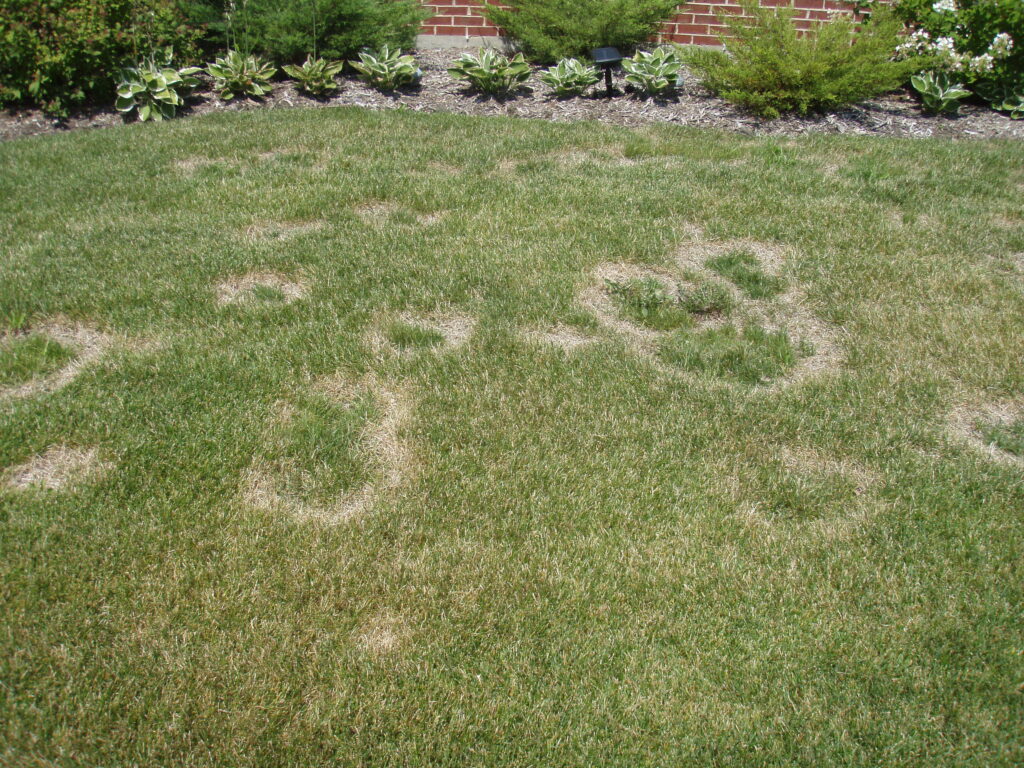
What are the Benefits of a Core Aeration Service
Alleviates Soil Compaction
Compacted soils severely limit the ability of turf grasses to develop strong root systems. When grasses are forced to grow in these conditions, they often end up with shallow roots—just 3 inches or less—making them more vulnerable to stress and less able to thrive.
Up to 3 Inch Deep Plugs
Core aeration relieves soil compaction by pulling cores of soil up to 3 inches in depth.
Core Aeration
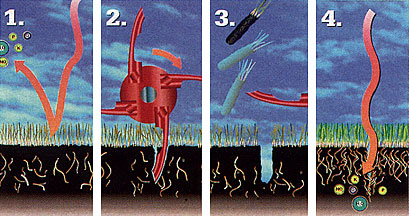
A Must-Do in Colorado
Aerating the soil is a crucial step for any healthy lawn. When you aerate, you enhance air exchange, which enables the soil to absorb water, lawn fertilizer, and essential nutrients more effectively. Moreover, a well-aerated soil fosters a thriving environment for beneficial microbes, ensuring your lawn remains vibrant and resilient.
Deeper Grass Roots
Lawn aeration promotes deeper root growth for a lush, healthy and drought-resistant lawn.
Helps with Lawns That Have Been Overwatered
Overwatering can all cause soil compaction. We recommend a sprinkler audit when a lawn is showing signs of severe compaction caused by being over watered.
Double Core Aeration
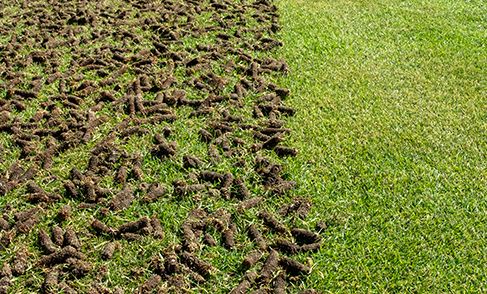
When is the Best Time of Year to Aerate a Lawn?
Spring and/or Fall
Spring Aeration Season: March 1st – May 31st
Fall Aeration Season: September 15th – October 31st (later into November is possible if there’s no snow on the ground).
A Lawn Should be Aerated at Least Once Per Year
Lawn aeration is essential for maintaining healthy grass by relieving soil compaction, and it should be done at least once per year, ideally in the spring or fall. Core aeration enables critical nutrients, air, and water to penetrate deep into the soil, promoting lush growth.
Spring vs Fall Lawn Aeration Services
Spring aeration not only alleviates compaction but also enhances air circulation, setting your lawn up for a vibrant summer.
Fall aeration ensures that moisture reaches the root zone quickly, reducing the risk of winter desiccation.
Up to 3 Inch Plugs
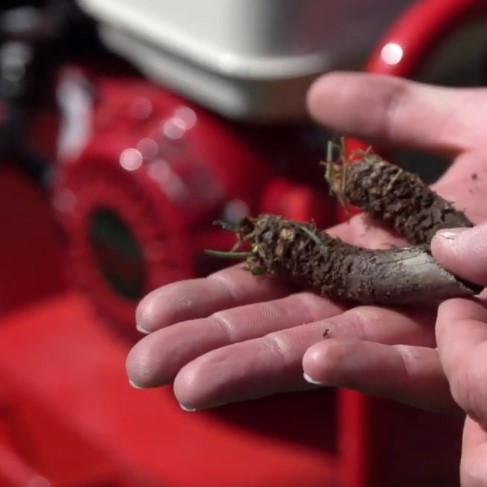
Aeration Helps with Air, Water, and Root Growth
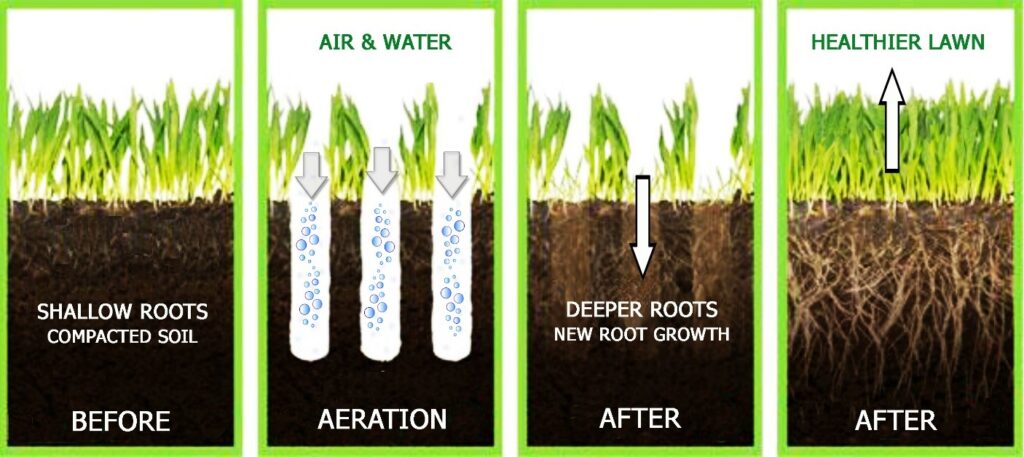
How Much Does a Lawn Aeration Service Cost?
Aeration prices are based on your lawn’s size. Use our online lawn measuring tool, which utilizes Google Maps technology, to measure your lawn’s square footage.
Lawn Aeration Service FAQ's
What is the Difference Between De-Thatching and a Lawn Aeration?
Dethatching Service
Thatching or dethatching a lawn involves using a machine called a power rake to physically remove organic matter that is not decomposing properly. This organic matter includes old grass clippings, tree leaves, and other materials that are not decaying effectively. The buildup of this organic matter is known as thatch, which typically accumulates in lawns with poor maintenance practices, such as improper watering, incorrect mowing, and the use of chemical fertilizers and weed controls. When a lawn lacks beneficial microbial activity, organic matter can accumulate, leading to thatch problems.
Lawn Aeration Service
On the other hand, a lawn aeration service uses a different type of machine that removes plugs of soil, alleviating soil compaction. This process allows nutrients, water, and air to penetrate the soil. Air is essential for the survival and growth of beneficial microbes and bacteria. Maintaining a healthy, living soil with these beneficial organisms can help prevent the need for power raking or dethatching.
Dethatching a Lawn
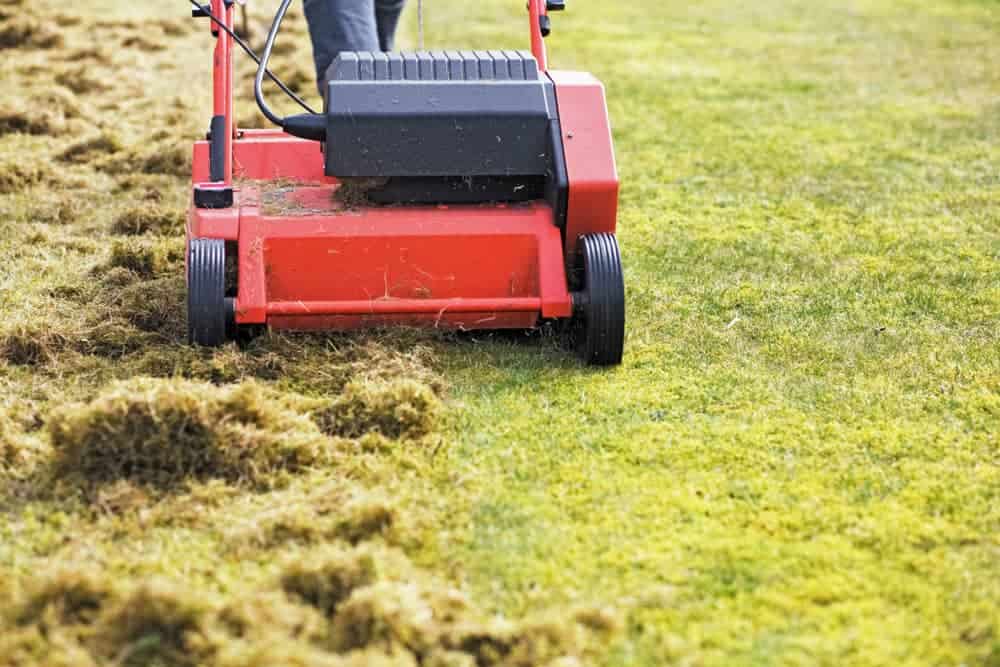
Why is Core Aeration Important for Colorado Lawns?
Clay, Snow, and Drought
Aeration is crucial for maintaining healthy lawns in Colorado due to the region’s dense clay soils, fluctuating weather conditions, and frequent drought periods. Clay soil naturally compacts over time, restricting air, water, and nutrient movement to the roots, which can lead to weak, shallow grass growth.
Faster Recovery in Difficult Conditions
Additionally, aeration helps lawns recover from stress caused by foot traffic, snow compaction, and extreme temperature shifts. By aerating once or twice a year, typically in the spring and fall, homeowners can significantly improve their lawn’s resilience, making it greener, healthier, and better equipped to handle Colorado’s challenging conditions.
Heavy Clay Soil
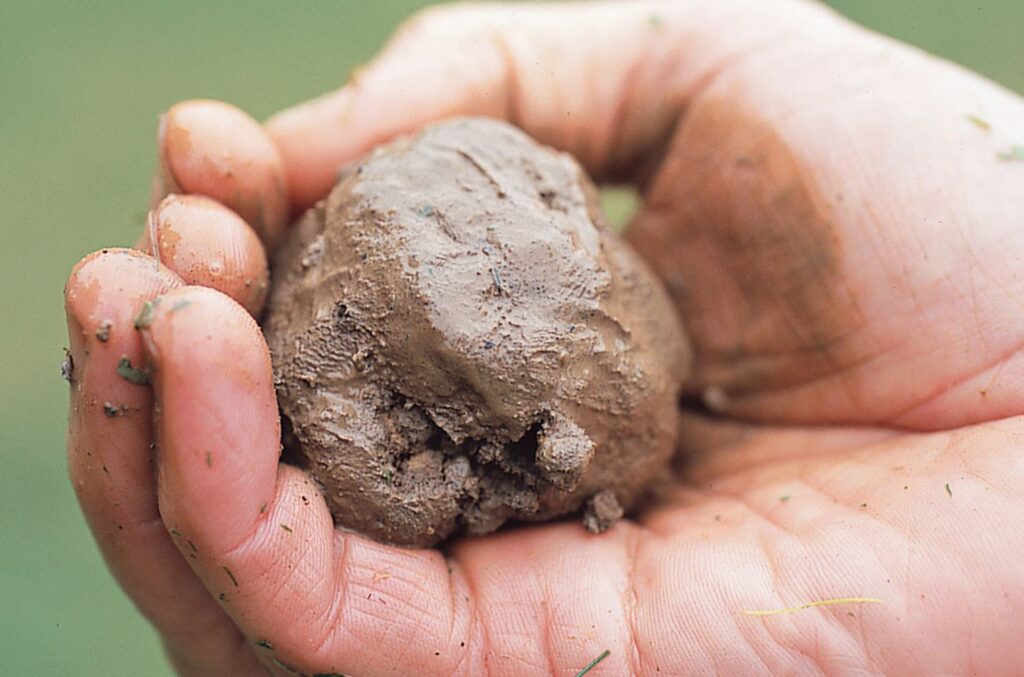
Additional FAQ's - Core Aeration Service
Hitting a sprinkler head during aeration is unlikely; however, we cannot guarantee the safety of any unmarked heads. Please mark any sprinkler head that is located more than 6 inches from the edge of the lawn. If an unmarked sprinkler head that is more than 6 inches from the perimeter is hit and damaged by the aerator, we will not repair it. While we can repair unmarked damaged sprinkler heads, this service will incur an additional charge.
The best thing to use is a flag, but you can use anything that is easily visible like large sticks, large rocks, cat food cans, or anything else that would be noticeable.
For cool-season grasses like fescue and bluegrass that grow in Colorado, aerate in spring (March – May) or fall (September – October).
Most lawns benefit from aeration once a year. However, highly compacted lawns or those with heavy clay soils that are often found in Colorado may require aeration twice a year.
Signs your lawn needs aeration include poor drainage, sparse or thinning grass, the presence of heavy thatch, or soil that feels hard and compacted. If water tends to pool in your yard, it might also be time to aerate. In Colorado, due to our heavy clay soils, aeration needs to be performed at least once per year.
Core aeration removes plugs of soil, reducing compaction more effectively, while spike aeration creates holes by pushing soil aside, which can sometimes increase compaction in heavy soils.
Each sprinkler system is different but we recommend between 4/10ths of an inch of water and 7/10ths of an inch of water, depending on sun angle. We have a wonderful webpage on how to properly water a lawn that can better explain this.
Recovery is typically quick, especially if done during the growing season. Grass usually starts filling in within a few weeks, and the benefits of aeration are visible in healthier, thicker turf.
We stay about 6-8 inches away from the edge of the lawn. This helps protect the sprinkler heads that are on the perimeter of the lawn.
Our machines extract soil plugs that are 1 to 3.5 inches deep, depending on soil compaction and moisture levels. For optimal results, we recommend watering your lawn 1 to 2 days before the core aeration service.
Lawn aeration is the process of pulling plugs from the soil with small holes to allow air, water, and nutrients to penetrate the roots of grass. This helps reduce soil compaction and promotes healthier lawn growth.
Yes, water your lawn 1–2 days before aeration to soften the soil, making it easier for the aerator to penetrate. Aerating dry, hard soil can produce shorter plug length.
Run the sprinklers for a normal watering cycle as excess watering is not necessary.
Aeration helps alleviate soil compaction, improves drainage, encourages root growth, and enhances nutrient absorption. It is particularly beneficial for lawns with heavy foot traffic, poor soil, or excessive thatch.
After aerating, leave the soil plugs on the surface to decompose and return nutrients to the soil.
Indirectly, yes. Aeration promotes a healthy, dense lawn that can outcompete weeds. However, it won’t kill existing weeds.
We can repair your damaged sprinkler line; however, please note that there will be a charge for the repair. It’s advisable to contact the company that originally installed the sprinkler lines to inquire about a warranty for the repair, as the line was not installed at the correct depth of 9 inches deep. Core aeration plugs only reach a maximum depth of 3.5 inches deep so a properly installed sprinkler line should be damaged. We appreciate your understanding; we are not trying to be difficult, but our technicians cannot see the underground sprinkler lines and, therefore, we would not be able to avoid hitting a shallow sprinkler line.
After installing new sod, you should wait 6 to 12 months before aerating the lawn. This allows the sod to fully establish its root system and bond securely with the underlying soil. Aerating too soon can disrupt the rooting process, potentially lifting the sod and causing uneven growth. Once the grass is actively growing and well-rooted, aeration can be performed to promote healthy root development and improve soil health. To check if the sod is ready, gently tug on it; if there is strong resistance, it’s likely well-rooted and can handle aeration.